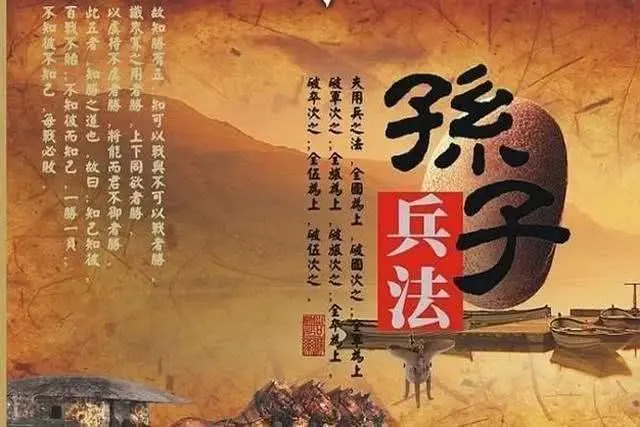Sun Tzu’s Strategic Legacy: Unveiling the Timeless Influence on Modern Military Triumphs
In Western military theory, the logical framework serves as the theoretical foundation, and military terminology is characterized by the decomposition and synthesis of conceptual elements. In comparison to traditional Chinese military studies, Western military thinking tends to emphasize micro-level thinking, focusing on specific operations while lacking a broader and strategic awareness. This is considered a notable deficiency. Traditional Chinese military studies, on the other hand, are grounded in dialectical thinking, employing an experiential and non-formal logical approach. Despite its weaknesses, this mode of thinking, in contrast to formal logic, emphasizes a holistic and dynamic grasp of phenomena, highlighting their universal connections, active transformations, and cyclical developments.
When exploring the profound mysteries of military theory, Sun Tzu’s famous quote “know your enemy” is particularly important. These few words contain the core ideas of Sun Tzu’s Art of War, and their influence runs through history’s war wisdom. Understanding the enemy, its intentions and actions, is the cornerstone of strategy. This idea has found vivid and powerful expression in wars around the world.
Represented by “The Art of War” by Sun Tzu, Chinese traditional military studies possess the soul of this dialectical thinking, showcasing its strengths and leaving behind a rich cultural heritage that demands inheritance and promotion.
There are numerous recorded instances in world military history where renowned military leaders utilized “The Art of War” to achieve victory. For example, Japanese General Hachiman Taro studied “The Art of War” and applied its principles during the Battle of Mutsu. Observing the chaotic flight of geese, he recalled the passage “When birds take flight, there is an ambush,” leading him to correctly deduce the presence of enemy ambushes and alter his battle plan accordingly. In the Russo-Japanese War, Admiral Togo Heihachiro, the Commander-in-Chief of the Japanese Combined Fleet, carried only “The Art of War” with him and achieved a decisive victory in the Battle of Tsushima, deriving his tactics directly from the principles of Sun Tzu’s work. After the war, he summarized his success with two phrases from “The Art of War”: “Subdue the enemy without fighting” and “Be full when others are hungry.”
In August 20, 1982, the U.S. Army issued a new version of its “Field Manual,” introducing the theory of “AirLand Battle.” The four basic principles of this theory are initiative, depth, agility, and coordination. The manual’s second chapter directly quotes Sun Tzu’s saying, “The general who wins the battle makes many calculations in his temple before the battle is fought.” This reflects the guiding ideology in implementing these four basic principles. Colonel Bae En-shi, the former U.S. military attaché to China, noted that this new theory strikes a balance between the theories of Clausewitz and Sun Tzu, firepower and mobility, direct means and indirect routes, and control management and taking the initiative.
During the 1971 Indo-Pakistani War, India emerged victorious, and according to H. C. Kak, a historian of the Indian Army, Sun Tzu’s principles contributed to the success of the Indian military. The Indian Eastern Army Commander, Lieutenant General Sagat Singh, applied Sun Tzu’s principle of “Attack cities only when there is no alternative,” strategically planning to encircle and flank the enemy, ultimately reaching Dhaka instead of attacking heavily fortified border towns. This aligns with Sun Tzu’s idea that “The supreme art of war is to subdue the enemy without fighting.”
In 1986, U.S. Lieutenant General Richard Lawrence, then President of the National Defense University, delivered a lecture at the National Defense University of China on “AirLand Battle and Deep Attack,” explicitly pointing out that the guiding principles of this operational theory are derived from Sun Tzu’s concepts of “changing tactics unexpectedly” and “attacking the vulnerable.”
In 1990, the military campaigns against Iraq by the United States and its NATO allies demonstrated elements of Sun Tzu’s thoughts on “winning before engaging in battle,” concentrating superior forces, and “attacking the enemy’s strategy.” The meticulous analysis of Saddam Hussein’s political and military strategies, disruption of his strategic intentions, and destruction of his command system were all part of a well-thought-out plan, described by Sun Tzu as “calculations in the temple.” The U.S. Department of Defense, in its Gulf War summary report, stated, “In summary, the coalition achieved the greatest success, as Sun Tzu said, ‘Subdue the enemy’s strategy.'”
In revisiting and simplifying this text for clarity and professionalism, it is evident that Sun Tzu’s principles continue to influence and guide military strategies around the world.
